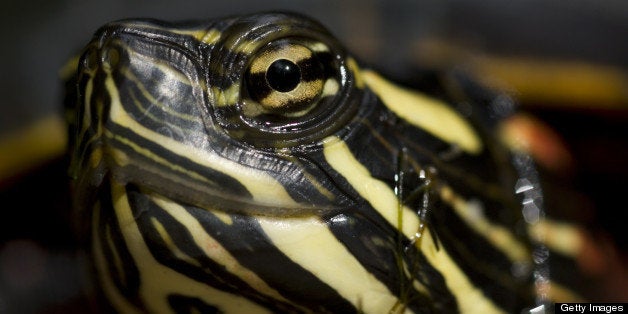
If you're a male painted turtle, global warming might sound great at first: A new study suggests it will mean more females to mate with and fewer male rivals to fend off.
But, as usual with climate change, every silver lining has a cloud. In this case, too many females could render the species incapable of reproducing by century's end.
Painted turtles (Chrysemys picta) live in freshwater habitats across North America, where the sex of their unhatched young is determined by ambient temperature. Cooler weather favors male babies; warmth leads to more females. The reason for this remains unclear, but it's a trait shared by many reptile species as well as certain types of fish.
Mother turtles have some control over the phenomenon, shifting their nesting dates by up to 10 days in an apparent attempt to balance their offspring's sex ratio. Researchers from Iowa State University discovered this by studying painted turtles on a small island in the Mississippi River for 25 years. But in a new study, the researchers conclude that not even 10 days of wiggle room are enough to offset the effects of climate change.
"Our results suggest that females will not be able to buffer their progeny from the negative consequences of climate change by adjusting nesting date alone," the researchers write. "Not only are offspring sex ratios predicted to become 100 percent female, but our model suggests that many nests will fail."
A temperature rise of just 1.1 degrees Celsius (1.98 Fahrenheit) could trigger all-female nests, the researchers report, even if mother turtles lay eggs earlier. And since average global temperatures are projected to rise by 4 to 6 degrees Celsius (7.2 to 10.8 Fahrenheit) in the next 100 years, the researchers say extinction is a possibility — even though painted turtles overall are not yet considered an endangered species.
The turtles could still find ways to dodge an all-female future, such as by choosing shadier nesting sites or evolving less heat-sensitive eggs. But as lead author Rory Telemeco tells New Scientist, the speed of climate change makes such adaptations difficult.
"The problem is that climate change is happening so rapidly that an evolutionary response, especially in long-lived organisms, is not likely," he says.
Although their study focuses on painted turtles, the researchers add that a variety of wildlife may be vulnerable to shifting sex ratios. "Because the seasonal thermal trends that we consider are experienced by most temperate species," they write in the journal American Naturalist, "our result that adjusting spring phenology alone will be insufficient to counter the effects of directional climate change may be broadly applicable."
That might not be the only broadly applicable lesson we can learn from painted turtles, though. Scientists recently sequenced the species' genome, part of an effort to learn how it performs feats like hibernating underwater or surviving for months with little oxygen. Aside from possibly yielding new medical treatments for humans, painted turtles' genes may also offer clues about how they — and other animals — will respond to climate change.
"Turtles have repurposed some of the genes that they share with their relatives, but they’ve tweaked them and gotten some innovative outcomes," says Fredric Janzen, an evolutionary biologist at Iowa State who contributed to both studies.
